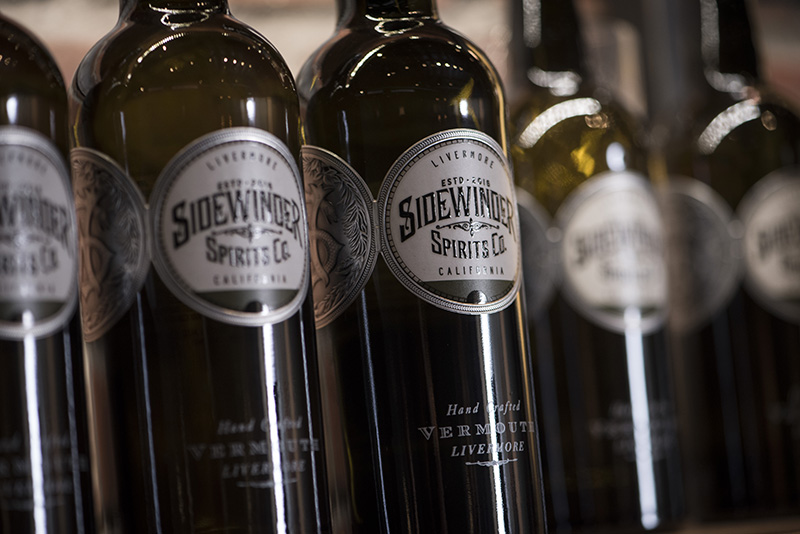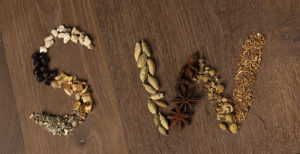Vermouth: The Formulas

Vermouth is classified as a wine, and though fortified and aromatized with botanicals, the quality of the wine determines the quality of the vermouth. Much of the vermouth in today’s market, especially for inexpensive vermouths, is produced with wines that have been filtered to remove off odors or flavors. Even the more expensive vermouths often rely on wine made elsewhere; rare is the vermouth producer that makes their own wines.[1]
About ninety percent of a vermouth is wine. The other ten percent is the brandy used to extract the botanical essences and provide fortification. The brandy for most commercial vermouth is purchased in bulk as a neutral spirit. We believe that the poor quality of both the wine and the brandy is the reason so many of today’s vermouths seem tired.
We have advantages over other vermouth producers. Because we produce our own wines and barrel aged brandies, we can build a vermouth from the ground up. Believing the base wine is the most important element in a fine vermouth, we use only our sauvignon blanc for its freshness, acidity, and varietal flavors. No bulk wine this – it is the same wine that goes into our single-varietal bottling.
We also use our own brandy, distilled in-house and aged in barrel for a year. Barrel aging takes the harsh edges off of the brandy and adds hints of cloves, vanilla, and cinnamon. Sauvignon Blanc and house-produced barrel-aged brandy are the foundations on which our vermouth is built.
From our base of wine and brandy, we compose our vermouth from a selection of herbs, barks, roots, and spices. Because there is no need to mask oxidized odors in our base, we are free to compose our vermouth like a perfumer builds a scent. But, unlike the perfumer, we also must consider taste and texture.
We begin with the bittering agents. Bittering agents refresh the palate and provide balance against the sweetness of the other botanicals. The list of allowable bittering ingredients is long and includes wormwood, cinchona bark, and gentian. In our dry vermouth, we have chosen to use wormwood as one of several bittering agents because of its delicate aroma. We do not use wormwood in our sweet vermouth because it is too bitter.
Next, we build the aromas of our vermouths, beginning with the base notes. These are the deep notes that will support the other aromas. Tarragon and vanilla come to mind here. Then we build the middle notes – lavender, orange peel, chamomile, and orris root are just a few of the available botanicals that we use. Finally, the top notes. These are the fragrances that first reach our nose and establish our initial impressions of the vermouth. These include the traditional garden herbs and citrus fruits like coriander, rosemary, and grapefruit. About a dozen botanicals are used in our dry vermouth, and nearly double that in our sweet vermouth.
The traditional way to incorporate the botanicals into the wine was to cold extract them slowly like a tea. Today, the approach is to use commercially available extracts that can be added quickly and inexpensively before bottling. We have returned to the time-honored approach of cold extraction of hand-selected ingredients. It takes weeks of careful monitoring, but gives a cleaner, more elegant result.
Tomorrow, we release our sweet vermouth to our members. Because it has been crafted from the ground up, each step carefully controlled in our winery, it is clean and refreshing yet, at the same time, profoundly complex. It is a bespoke vermouth, crafted with the same care as all our wines. Enjoy it as an aperitif, or as an ingredient in your favorite cocktails. It truly redefines the concept of vermouth for this generation.
[1] It is unusual to find a vermouth producer that produces its own wines. Rare is the vermouth producer who crafts both their wines and their brandies for their vermouths. These few bespoke producers are worth seeking out.



